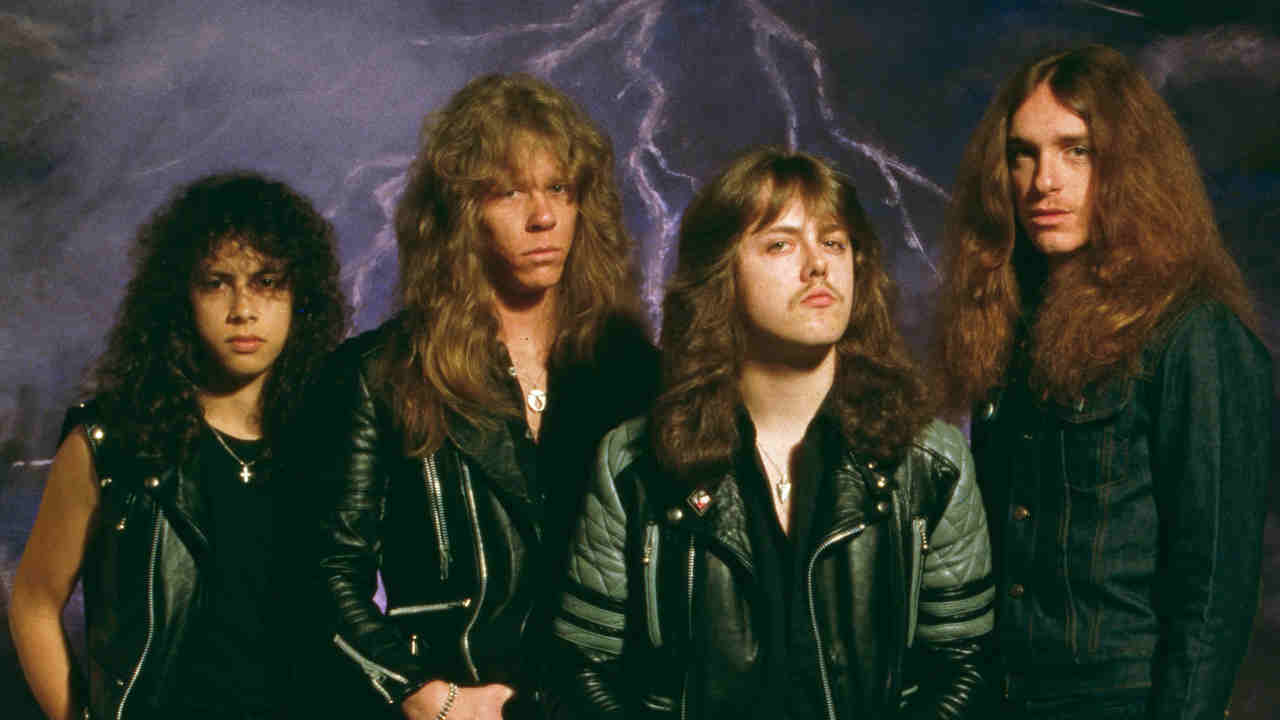The inspiration for Metallica’s first truly world-beating anthem came from an unlikely source. Cecil B. DeMille was the director of some of the most opulent Hollywood movies of the 40s and 50s. For his final film, 1956’s biblical epic The Ten Commandments, DeMille enlisted chisel-jawed superstar Charlton Heston to play Moses as he led the enslaved Hebrew people out of Egypt to the Promised Land as a series of plagues were visited on their oppressors.
In one Danish household, this Old Testament extravaganza became essential viewing whenever it was repeated on TV years later. “I was obsessed with The Ten Commandments as a kid,” says Lars Ulrich. “If you watch the movie, you can definitely see that it inspired Creeping Death. There’s a connection.”
That youthful obsession was one of the sparks for the song that helped kick Metallica to the next level. Creeping Death was six minutes of ambitious, air-punching greatness that proved there was more to these snarling street rats than booze-fuelled velocity. Almost 40 years on, it stands as one of the keystones of Metallica’s career – a track that’s as monumental as any Hollywood blockbuster.
Kill ’Em All had barely cooled on the record store shelves, but Metallica were already straining to push beyond the limits of the nascent thrash scene they’d helped define. Creeping Death was one of the first songs they wrote specifically for the follow-up, Ride The Lightning, and both its scale and the ease with which it came together indicated they were streets ahead of their peers. “Musically, it was one of those songs that came quickly, and then became its own thing just as quickly,” says Lars.
Like more than one early Metallica song, it was a bunch of different ideas jammed together. Arguably the most memorable part wasn’t even from a Metallica song. The chanted breakdown – ‘Die by my hand!’, soon to become a staple of their live shows – was brought in by Kirk Hammett from his original band, Exodus.
“I was in high school when I wrote the riff,” says Kirk. “I was trying to write something heavier than the bands I was listening to, and that felt like the first time that I’d done it. Kind of, like, ‘Wow, I’m on to something!’”
The guitarist and his bandmates in Exodus worked the crunching riff up into a song, Die By His Hand, which featured on a two-track 1983 demo of the same name. A few months after joining Metallica, he was surprised to hear his new bandmates cranking out the same riff as part of one of the new songs they had written.
“James and Lars hammered Creeping Death out in a day and then called me down to the rehearsal space,” Kirk told Metal Hammer in 2014. “They got to the Die By His Hand riff and they started grinning at me and I laughed because I’d had that riff kicking around for so long, but it just worked in Creeping Death so well.”
The guitarist suspected the pair were given the tape by Exodus manager/Metallica sound engineer Mark Whittaker when they were considering poaching him from their Bay Area rivals in early 1983 and liked the song so much they decided to repurpose part of it themselves. One person who was less than impressed was Exodus guitarist Gary Holt. “I recall calling Kirk up and giving him a great deal of grief,” he later recalled. “He said, ‘Ah, I thought I asked you if it was OK.’ I’m like, ‘No, you didn’t.’”
Lyrically, Creeping Death took its cues from an even older source: the Hollywood blockbuster that Lars had loved when he was younger. “Me and James and Cliff got a VHS of The Ten Commandments and went to Cliff’s parents’ house to watch it, because we didn’t have a player ourselves,” recalls Lars.
The movie provided ideas and imagery that ended up in the finished song – including references to a series of plagues visited upon ancient Egypt after the ruling Pharaoh refused to free the Hebrews. The worst of these sees the Angel Of Death killing the firstborn son in every Egyptian household. “Then this fog appears out of the moon and comes down and starts creeping across the ground, smoke machine-style, and everybody who’s caught in it falls over and dies on the spot,” says Lars.
It was Cliff Burton who came up with the phrase ‘Creeping Death’ to describe this killer fog. “As was often the case in Metallica, it just sounded cool, it didn’t have any kind of particular connotation or merit,” says Lars. “It was just two words that sounded cool.”
The finished song appeared as the penultimate track on Ride The Lightning, though in many ways it proved to be the album’s real climax. By that time it had already become a cornerstone of Metallica’s live set after the band premiered it at the Keystone in Palo Alto, California on Halloween 1983, nine months before the album came out. More than 30 years and more than 1,500 live performances later, this biblical epic stands as a landmark for Metallica, and for metal itself.

